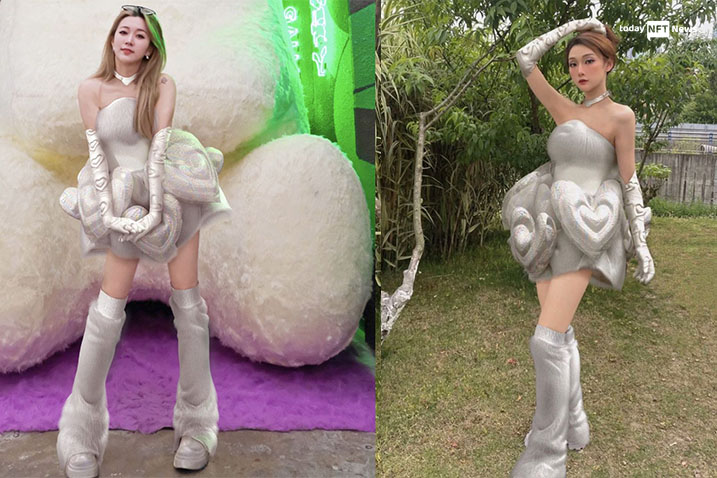SNEAK PEEK
- Social media platform Xiaohongshu is developing niche services for fashion bloggers.
- Drawback of NFT clothes is their short shelf life.
- Virtual fashion can be enhanced by reducing the time to wear the clothes
Xiaohongshu, China’s social media platform, which is also its Instagram version, is developing niche services for fashion bloggers who are keen to strut their stuff in NFTs based digital clothes.
Video blogger Linersan has shared her experience of buying and wearing digital NFT clothes. According to her, she bought the NFT for a virtual dress and shared it with a designer with her pictures.
She further said that a high definition photo is a must and should look like she is wearing the dress for real.
After a period of three days, the pictures came back showing her wearing the digital silvery white dress, Galaxy Heart. While the photo’s cost was 399 yuan, additional copies were priced at 150 yuan each.
Linersan shared that NFT clothes have a limited shelf life.
Virtual costumes on Xiaohongshu start from 20 yuan for a head ornament to 5,000 yuan for a sci-fi themed dress. The R-Space shopping window includes virtual bags, shoes, earrings and manicures.
Realizing the business opportunities that lie in the NFT clothes, Xiaohongshu has been busy recruiting virtual fashion designers since May. Moreover, since June 10, every Friday, it promotes new clothes on the NFT market.
Jane Xu, NFT fashion blogger, shared buying 24 NFT items and publishing 13 posts with photos of herself in the digital clothes.
Xiaohongshu’s NFT marketplace has 298 items put up by about 136 virtual fashion designers.
According to Linersan, the technology is in its early stage, as the present metaverse costumes are possible to wear only on a still photo.
Chief executive officer for 3-D clothes designing software maker Linctex, Chen Bin said that digital fashion is in its early stage with computing power and messy AR/VR headsets being the major hurdles.
Additionally, he said:
The GPU computing power needs to be doubled by one to two times at least, or quadrupled, ideally, then many technical problems will be solved. Cloud computing could also be a way to solve these problems.









